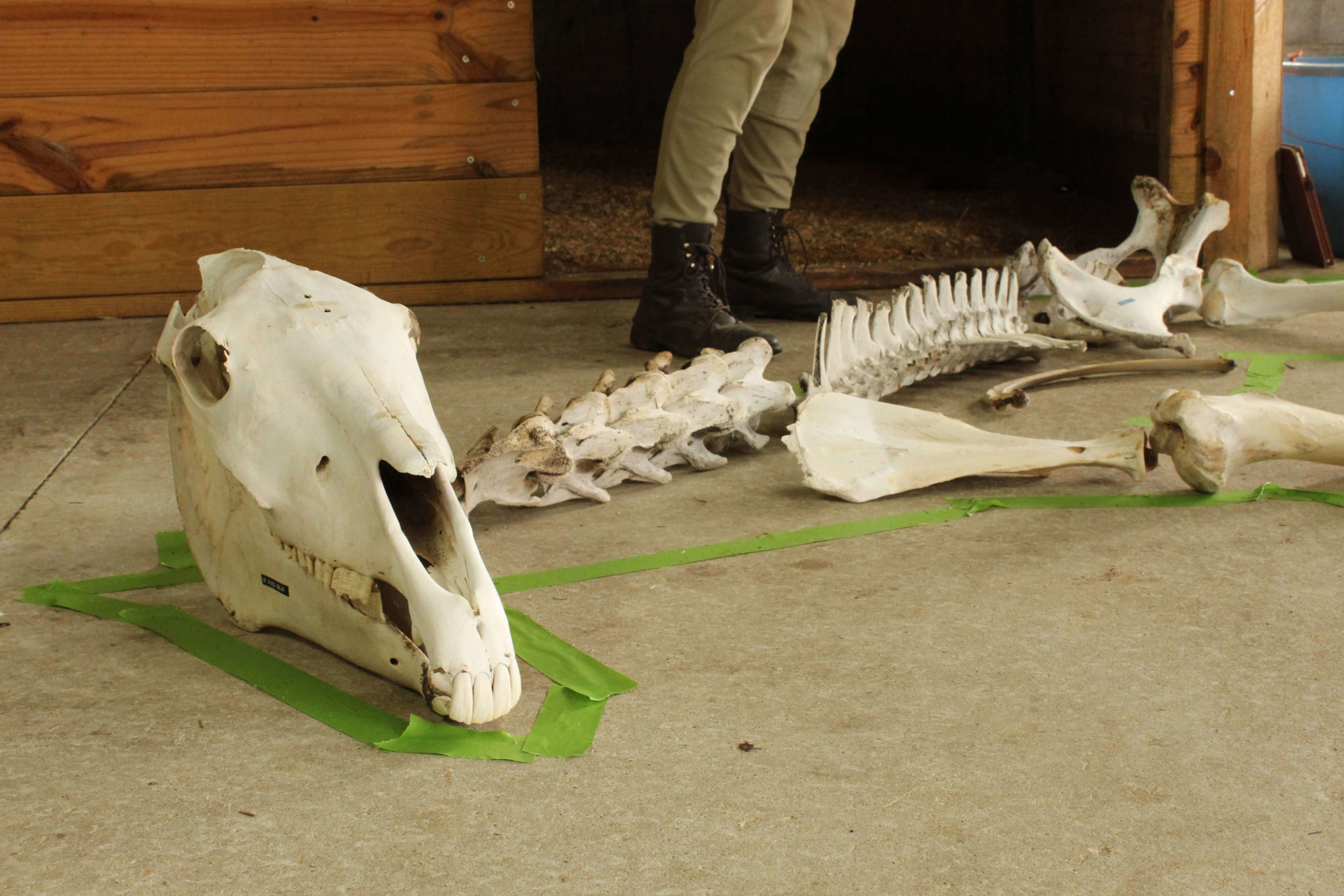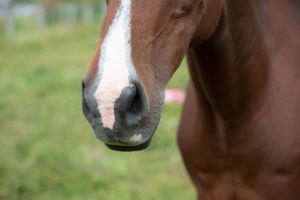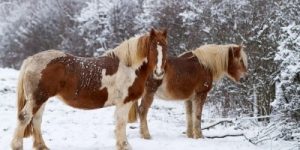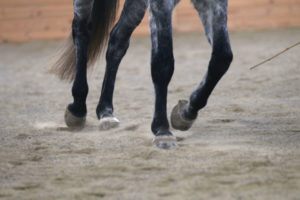Let’s go back to a basic lesson in horsemanship, one that you would have gotten at any pony club or horse camp as a kid… Parts of the Horse!
This is a lesson that is just as important for adult riders as it is for kids. Knowing the parts of the horse will allow you to describe a horse’s conformation or the location of an injury. It will also make you a better rider in that knowing anatomy is what allows us to understand, and eventually improve, the movement of our horses.
The “horse world” can have a language all its own. We have terms to describe horses, their behavior, and the equipment we use. We also have terms to describe specific parts of the horse’s anatomy.
In the video below, we will review all the basic parts of the horse, so the next time someone mentions this horse has a “short croup”, a “stiff stifle”, or an “injury to the gaskin”, you’ll know exactly which part of the horse they are referring to!














38 Responses
Very clear and informative. Love your videos.
Enjoyed the video. Question. My mule drags her back hoof sometimes, it appears to be hung. After a minute or two she will be okay. What part would be causing this.
Lynn, that is really difficult to answer – it may be her stifle if she is dragging her toe. If it is a significant lameness perhaps you should call a vet out to examine her?
-Julia Burdy, CRK Training Community Manager
Thank you Callie! (and Noel!!) I look forward to your weekly videos!
Hi Callie,
Since you commented that you have been interested in horse anatomy since you were a child, I thought you would be interested in this fascinating BBC documentary. Perhaps you have already seen it.
The BBC has a series of documentaries on dissections of animals, “Inside Nature’s Giants.” In this episode, they dissect a Thoroughbred racehorse to try to understand why they can do what they do.
http://www.youtube.com/watch?v=QsvS6gEBJuE
Thanks for sharing this Janet!
-Julia Burdy, CRK Training Community Manager
Love that you are going this direction. Ridders need to step back from just riding and start to spent time studying and learning more about their partner. This all adds so much to you having a great relationship with your horse. Then when you add some massage to this knowledge your horse will really enjoy your time together.
This is great – I never knew horses had patellas in the stifle!!
Appreciate all your videos; they are a great complement to my lessons.
Bill – new rider in Idaho
This was a very interesting video! I was unable to attend pony club and other horse camps when I was younger, so I never learned the anatomy other than the simple ones such as mane, forelock, and hoof. I can’t wait to use this video to help me step deeper into the anatomy of horses. Thank you for this fun video!
Great job with the anatomy. Too often I see people try to give way to many parts so that no one can remember any of them. I appreciate my years of 4H and learning the parts of the horse. I frequently start young people with the most obvious – easy parts to help build confidence and then add one that will be harder – i.e. ears, eyes, nostril, neck, chest, withers, shoulder, knee, hoof. mane, tail. The average beginner horse book lists 50 horse parts and I know many competent adult riders who do NOT know the parts of the horse.
I love all of your videos – you translate everything you do in to a very easy to understand way. Thank you!
Since I never took any classes or horse camp as a kid, this video was very informative. I really get a lot out of all your videos. Keep up the good work.
Happy to hear you enjoyed this video Carol
-Julia Burdy, CRK Training Community Manager
Your videos and all the information you give , I really enjoy watching, listening and learning.
Thanks Ros
Very clear and helpful
I absolutely love your videos. I have learnt so much and you have answered many of my eternal questions. Cant wait to see more and to put it into practice. I am a 66 year old rider new to the saddle and loving it.
Hi Callie. I have been watching your videos and they have been very helpful. I live in Tasmania Australia. I have been given a horse. He will be 25 this year. He is an Arab, very gentle, very smart horse. I haven’t got him at my place yet cause I have been fertilizing the soil and cleaning the place up of a few rocks and timber. Going to build a stable for him cause our winters get quite cold and sometimes a bit of snow. I did a little riding when I was a lot younger so your videos have been very helpful. I have saved them so when I actually get him here I will be able to go over them as often as I like. I think he will be the teacher. Look forward to watching more. Keep up the good work. Regards Judy.
Congratulations on your horse Judy! It sounds like you are doing all the right things to prepare yourself for him to come home, including educating yourself
-Julia, CRK Training Community Manager
Thank you, Callie, for a wonderful refresher course on the equine skeleton.
You are a very pleasant instructor in all ways and I do appreciate listening to and watching you. I look forward to your future videos/courses.
Callie,
I’m looking forward to the free online anatomy lessons. You and Wendy both break down your subjects into understandable information. Thank you.
Nancy
PS I was impressed by your horse, Noel. …so calm and supple. When she turns her head to see what you are talking about, her nose practically touches her rib cage. I’d loved to see you do a video on different (fun?) exercises that you can do to make a horse more flexible in the neck and back areas.
Hi Nancy!
We look forward to having you join us in the online riding workshop coming up soon Thank you for the video suggestion – I’d also like to recommend a great book that Wendy also highly recommends, Activate Your Horse’s Core by Dr. Hillary Clayton tons of great stretches for horses in that book.
Thank you for the video suggestion – I’d also like to recommend a great book that Wendy also highly recommends, Activate Your Horse’s Core by Dr. Hillary Clayton tons of great stretches for horses in that book.
-Julia Burdy, CRK Training Community Manager
This is such a great video, Callie! I wish I would have watched it sooner so I wouldn’t have embarrassed myself at the barn the other day! I could have said, “I put on extra fly spray from the fetlock joint to the coronet” instead of, “I put on extra fly spray from that big bump above the skinny ankle part to the top of the hoof.” Yikes!
Now you know exactly where you are applying your fly spray
-Julia Burdy, CRK Training Community Manager
I loved this refresher! I now realize that I was confusing the knee of the front legs with that of the rear legs. My horse currently has some fluid buildup around his high suspensory ligament, which I can now say if located on the inside left cannon bone, right below his knee!
Awesome – glad you enjoyed this video and it was helpful for you identifying the parts on your own horse
-Julia CRK Training Community Manager
I am very much looking forward to learning more about the horse’s anatomy and how it relates to riding.
“Horse parts” names do get confusing and if you’re not using them on a regular basis they’re easy to forget. This is a video I plan to watch more than once.
I did learn a new one today, the “periople” which is the rough or sticky area of the hoof just below the coronet band.
Jack,
Glad you enjoyed the video – that is a great term, thank you for sharing!
– Julia Burdy, CRK Training Community Manager
Nice job Callie. I plan to have my granddaughter watch to learn the parts of the body. I’ve been enjoying your videos. They are really informative. Thanks for the time and effort you put into them.
Great idea for a video! Thank you!
This was great information look forward
To more video s Ty
Love the reminder! Thanks!
The video was very clear and informative.
Thanks
Great review.
Thank you Callie. The one part I had not heard of was the Gaskin. Is that a bone or just a muscle or both?
Carol
It is a muscle, it corresponds with the calf in humans!
-Julia Burdy, CRK Training Community Manager
I enjoyed your presentation –always ready to learn more thank you
Thanks for sharing!